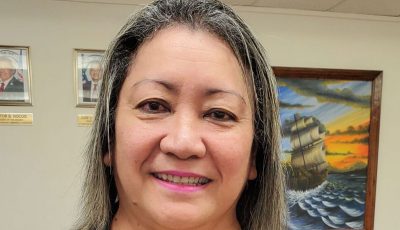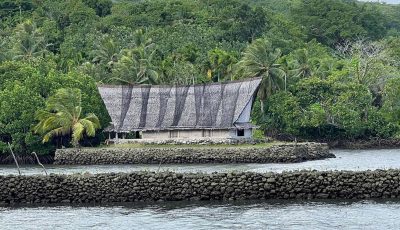Terms that obscure rather than clarify
I’m baffled at times by the language and words used in this broad discussion regarding not only Guam but the CNMI when it comes to the ongoing conversation of the military transformation in the Mariana Islands.
Some of the words used make no sense to me. The word “impact” is the best example I can think of and here’s what I mean: The word “impact” in my mind is a word more closely associated with, say, an economic event, such as what will be the “impact” of the stock markets should the Federal Reserve make the decision to raise interest rates? One answer is the possible decline of stock prices and the incentive for many investors to move money into bonds.
The use of the word “impact” within the context of a military buildup, however, is misguided because it hides the fact that natural, historical, and cultural resources will be lost, damaged, destroyed and harmed from proposed military actions or “training.”
Coral colonies will be damaged or destroyed if they meet a 75-ton LCAC at low tide over at Unai Chulu and this will result in the loss and destruction of thousands of coral colonies located on the island of Tinian that literally took thousands of years for Mother Nature to construct. The same goes with South Beach on Pagan Island.
Another thing that irritates me about this entire endeavor is the use of the word “training” because in my opinion the word is very misleading, as is the word “impact.”
The word “training” makes sense if one runs every day for 5 miles in order to train for a half-a-marathon in two months for the purpose of attempting to win a future race. But the word “training” within the context of military activities that may take place on Pagan and Tinian seems to me to be very misleading and largely sanitized because when the military trains, the “training” that is being proposed will include the use of small ammunition, medium-sized ammunition, large ammunition, rockets, bombs, missiles, mortar, hand grenades, submunitions, artillery, underwater explosives, and other kinds of explosive objects that, in combination and on a stand-alone basis, will produce hazardous wastes and toxic substances that will be introduced into the air, the coastal areas, the land surfaces and below the land surface domains that will result in the harm, injury, damage, loss, and destruction of the ecosystems found on both Pagan and Tinian that will, in turn, introduce greater risks to the human health and welfare of our people.
The overall point that I’m trying to make is that the words used by the military and adopted by several stakeholders do not necessarily help all involved and interested to develop a better and more complete understanding of what is at stake—and what is at stake is that in the future, damage, loss, harm, destruction, and injury to human health, to the environment, to Chamorro cultural practices and to associated social systems will be realized, representing life taking, versus life giving activities. Is this the future that islanders want to pass on to future generations in the name of Marine Corps and military desires and wants? I hope not.
Our islands are sacred in part because they are so small, with limited amounts of resources available to all villagers.
I don’t think anyone is against American military readiness nor do I think that folks truly dislike the Marines and the military, but I do think the proposals put forth so far by the military will result in the irreparable and irreplaceable loss, harm, injury, damage, and destruction to both Pagan and Tinian islands for several reasons including some of the reasons listed above. This to me is unreasonable and unjust.
Rick Perez
Hanover, NH



























